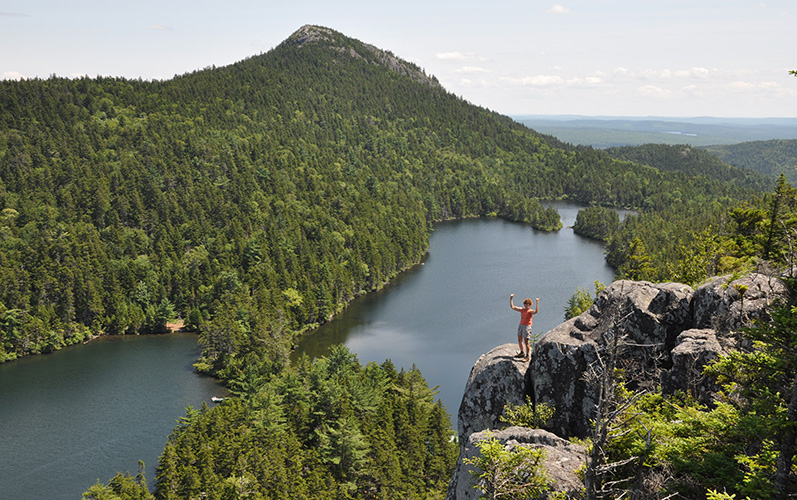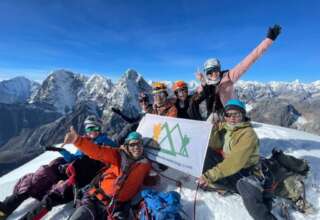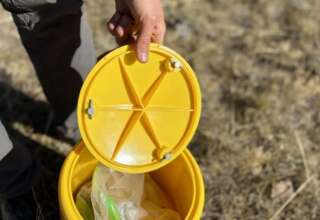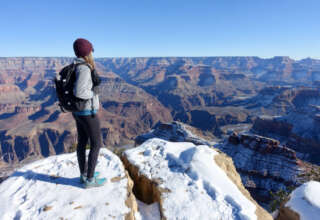Outline
With the right planning, the 100 Mile Wild (100MW) can be a difficult yet charming eight-day climb (and for through explorers and experienced “speedhikers,” who can rip off 20-mile days, significantly less). Father (then, at that point, 41) and girl (then 12) finished this in two sections in 2017 and 2018. We most certainly permitted ourselves additional chance to appreciate places we loved, or to recuperate from wet stuff or wounds, so anticipate ten days. Our 100 Mile Wild excursion at last total, we investigated and concocted a superior game plan. Thus, here is our aide, with a recommended schedule, and a pressing rundown.
Course: There are contentions for going south to north (as we did), or on the other hand, beginning at Abol Scaffold, and completing in Monson. The northern part is considerably compliment (read: quicker) territory, so beginning with a weighty pack may be simpler north-south, gobbling up food weight as you move south. Be that as it may, beginning from the south, and moving over the Fruitless Chairback and White Cap reaches could make your drained legs need to wrap up with the more delicately moving landscape of the north.
Timing: When we began the 100 MW, we did as such toward the finish of June/start of July. When we got down from the higher heights, the intensity was severe, and the bugs were merciless. We later completed the 100 MW toward the finish of September, and it was cold around evening time, yet wonderful during the day, and there were no bugs. I think a fair compromise would be the start of September (expecting your work/school/life permits this), which would in any case be sufficiently warm to appreciate dunks in the lakes and streams, cool enough around evening time to rest soundly, and at the very last part of bug season. One proviso to this arrangement – AT Shelter’s and tent locales might be genuinely full, as numerous through climbers will make their last push to Katahdin. Look at this outline from The Trip of through explorer tips for the 100MW, including a 5-day schedule. Some water sources may likewise be dry at this point of summer, contingent upon the downpours. Discussing which, watch the weather conditions figure – water intersections can be deceptive after weighty rains further upstream.
Resupply: We didn’t do this, however it merits considering. A few idealists accept that it’s cheating, however easing up your pack to the point of partaking in your stroll in the forest could help an extraordinary arrangement, and it’s your climb. Shaw’s Climber Inn (Monson), the Appalachian Path Cabin (Millinocket), and 100 Mile Wild Experiences and Suppliers are legitimate suppliers who can facilitate food drops for you along the 100MW. They can likewise give guidance, transport administration, Baxter/Katahdin licenses, assist you with arranging your vehicle at one or the flip side, and give a spot to remain previously or potentially later.
Proposed Schedule
Day 1: ME-15 in Monson to Wilson Valley Shelter (10.4 mi)
Outline: The very beginning is a moving climb, becoming accustomed to a weighty pack, and fording a few streams.
Feature: Little Wilson Falls, a sixty-foot cascade (mile 6.6)
Day 2: Wilson Valley Shelter to West Chairback Lake (14.1 mi)
Outline: Day Two is a more drawn out day (begin right on time), with a portage of Long Lake Stream, and a consistent, exhausting climb of Fruitless Mountain, to an all over navigate of the Desolate Chairback Reach, finishing with a tent site on West Chairback Lake (.2 mile side path).
Feature: Perspectives from Desolate Edges (mile 6) and insectivorous pitcher plants in Fourth Mountain Swamp (mile 10.4).
Day 3: West Chairback Lake to Carl A. Newhall Shelter (11.8 mi)
Outline: Fruition of Infertile Chairback cross, and plummet to the fording of the West Part of the Lovely Stream. The midday rising up Bay Hagas Mountain along Bay Hagas Stream will feel long, without numerous milestones (note: setting up camp or pit fires are disallowed south of the Inlet Hagas Slice off trail to north of the West Part of the Charming Waterway).
Feature: Bewildering drop of Chairback Mountain, and a welcome downhill climb through pine woodlands to Bay Hagas and the tall old-development pines of the Withdrawal.
Change-up: AMC Gorman Chairback Hotel and Lodges, on Lengthy Lake, open by means of Third Mountain Trail or K-I Street. This AMC Cabin is a spot to rest, get perfect, unwind, and partake in the wild.
Day 4: Carl A. Newhall Shelter to East Branch Shelter (10.8 mi)
Outline: A long rising of the White Cap range, then, at that point, a drop toward the East Part of the Charming Stream.
Feature: Cool, clear spring water from the spring close to the Sidney Tappan Camping area (wellspring of Bay Hagas Creek). Culmination of White Cap (3,654 ft), with incredible perspectives (on a sunny morning) that incorporate Katahdin.
Day 5: East Branch Shelter to Prongs Campground (16 mi)
Outline: A move over the seat among Large and Little Boardman Mountains, over Little Boardman, a long stroll past Crawford Lake and Cooper Lake (watch for moose) to Tusks Camping area on Lower Jo-Mary Lake.
Feature: Swimming in Crawford Lake (5.1 mi)
Day 6: Prongs Campground to South End, Nahmakanta Lake (11 mi)
Outline: Short move over Potaywadjo Edge, pass Pemadumcook Lake, stroll along Nahmakanta Stream to south finish of Nahmakanta Lake.
Feature: Swimming at sand ocean side on Lower Jo-Mary Lake (1.7 mi), and Lake Nahmakanta (11 mi).
Change-up: for a break and a hot dinner, attempt White House Landing Camps on Pemadumcook Lake (search for the sign along the AT), who will get you by boat in the event that you call, (207) 745-5116, and meet them at an arrival off the old Mahar Sack Street (appx 5.1 mi south of Nahmakanta Lake). There is an extraordinary 2018 webcast episode on how White House Landing Camps became: http://www.outtherepodcast.com/episodes/2018/11/24/wonderful outsiders
Day 7: South End, Nahmakanta Lake to Rainbow Stream Shelter (10.7 mi)
Outline: One final mountain to cross, Nesuntabunt, then a long, forested stroll to Rainbow Stream Shelter.
Feature: Swimming openings close to Rainbow Stream Shelter (10.7 mi).
Day 8: Rainbow Stream Shelter to Abol Scaffold (15 mi)
Outline: Last day, quiet stroll close by Rainbow Deadwaters and Rainbow Lake, a short climb and plunge of Rainbow Edges, and a last push across moving timberland and swamp to Abol Extension.
Feature: View from Rainbow Edges (9 mi), and wrapping up.
Pressing Rundown
We will expect to be that, assuming you are climbing the 100 MW, you have proactively picked your pack and boots, know whether you need climbing shafts (most definitely, particularly on wet, rough plummets), and skill you will cook and cleanse water. We overpacked, and this rundown (with connections to what we utilized) removes trivial items like a scaled down casting pole (we found nothing), and firestarter sticks (we just made two fires – in assigned regions, obviously, and birch bark worked pleasantly). Father had a 75-liter, sixty lb pack since he would have rather not missed the mark on provisions with a youngster in the forest, yet this should be possible with a lot lighter pack. Make sure to leave no follow (void feast pockets make incredible garbage sacks to convey with you). Additionally, waterproof Stuff Sacks are fundamental to smooth out your pressing, keep things dry, and twofold as bear packs to suspend your food around evening time. Would suggest something like two (one each for attire and food).
Outside:
Pack raincover (spending plan elective is a garbage sack) Osprey UltraLight Raincover
Osprey Power through pressure 3L water repository (this can be weighty, however you don’t need to fill it as far as possible. You may likewise incline toward 2 more modest liter-size bottles with filtration tablets, all things considered)
MSR Sweetwater Microfilter for water refinement (see above)
Setting up camp/cleanliness gear:
Headlamp/batteries
Sun based lamp (lightweight, folding, and lights up inside of tent around evening time)
Tent and ground material (we utilized Kelty Salida 2 two-man, with ground fabric). An attempt to cut load simply by utilizing a hiking bed and cushion, and utilizing the AT covers, yet we observed that they were packed and boisterous, and the tent provided us with the choice of finding a lovely spot early, or driving somewhat further, and tracking down a level spot around evening time.
Lightweight camping cot (we both utilized Marmot NanoWave 55, which was awesome)
Dozing cushion (Therm-a-rest ProLite Sleeping pad was minimal and agreeable)
Wicking towel (Packtowl UltraLite Towel folded over apparel served as pad)
Mosquito headnet (get a long one that you can get into your shirt)
Parachute String (this is perfect, with StuffSacks, for hanging food up around evening time, making fixes, and appending things to your pack)
Child wipes
Raingear (your decision, would recommend great lightweight coat and jeans, as opposed to rain coat)
Maps (we utilized Guides 1 through 3 of the Authority Guide and Manual for the AT in Maine)
Compass
Ivory cleanser in Ziploc (99.44% unadulterated, and it floats. Ideal for tidying up in lakes/streams)
Gold Bond foot powder
Toothbrush
Toothpaste
Sunblock
Bug shower w/Deet
Tissue
Emergency treatment unit: tweezers, bandaids, moleskin, tingle cream, ibuprofen
Collapsing blade
Pipe tape (small roll)
USB sun oriented charger (refreshed 2024, in view of surveys and expansions in tech – this is really slick, lightweight, and re-energizes while you climb, utilizing the sun. Extraordinary method for saving juice in your telephone for photographs or evidence of-life instant messages when cell administration is free)
Eating (network sack for cookware) :
Across the board spork (Get My Fire going Titanium Spork)
JetBoil oven with igniter and two fuel compartments (in addition to back-up lighter)
SeatoSummit folding bowl (we shared courses, you needn’t bother with this performance)
Aluminum cup for espresso/hot cocoa/grown-up refreshments
Wipe absorbed cleanser (in Ziploc to tidy up), and little cloth to dry
Clothing (this will shift in light of timing-this was our mid-summer list):
3 + matches fleece socks (Smartwool Prescription. Weight Explorer)
2 sets Ex Officio clothing (fast drying, against microbial)
2 shirts/tank tops
2 sets convertible jeans/shorts
















